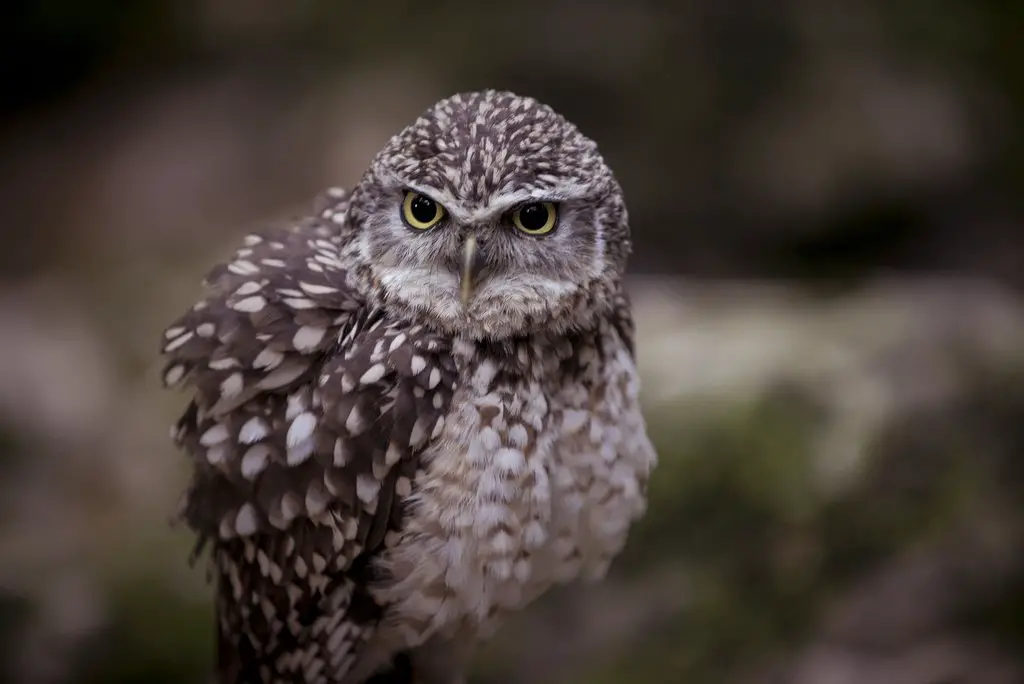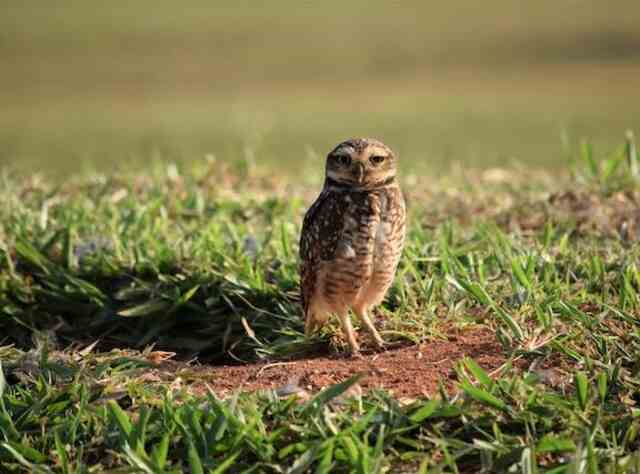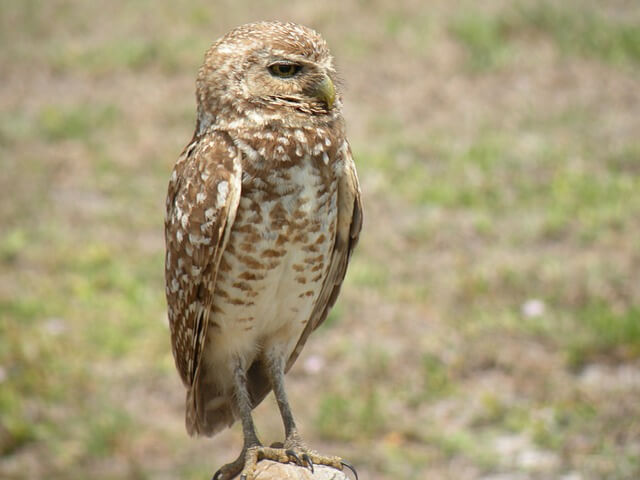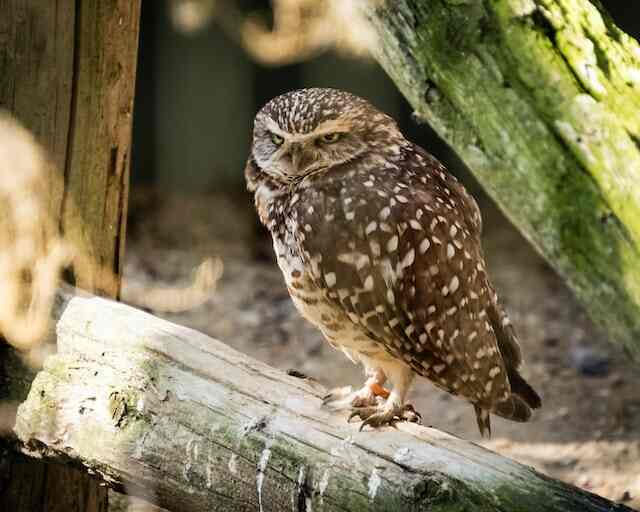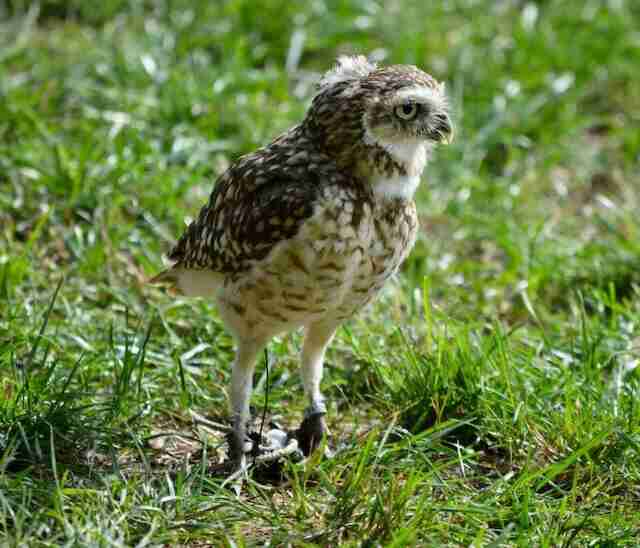Burrowing owls are fascinating creatures with unique behaviors and adaptations that set them apart from other owl species. Known for their distinctive appearance and ability to live underground, burrowing owls are among the most interesting avian species in the world.
In this article, we will delve into the world of interesting burrowing owl facts, exploring their behavior, habitat, diet, adaptations, reproduction, conservation status, and importance in ecosystems.
Table of Contents
- 1 Key Takeaways:
- 2 Key Identification Traits
- 3 Interesting Burrowing Owl Facts
- 4 Understanding Burrowing Owl Behavior
- 5 Exploring Burrowing Owl Habitat
- 6 Unveiling Burrowing Owl Diet
- 7 Examining Burrowing Owl Adaptations
- 8 Understanding Burrowing Owl Reproduction
- 9 Examining Burrowing Owl Conservation Status
- 10 Fascinating Burrowing Owl Facts
- 11 The Importance of Burrowing Owls in Ecosystems
- 12 Human Interactions with Burrowing Owls
- 13 Future Challenges and Conservation Efforts
- 14 Conclusion
- 15 FAQs: Interesting Burrowing Owl Facts
- 15.1 What are some interesting burrowing owl facts?
- 15.2 What is the behavior of burrowing owls like?
- 15.3 Where do burrowing owls live?
- 15.4 What do burrowing owls eat?
- 15.5 What are some unique adaptations of burrowing owls?
- 15.6 How do burrowing owls reproduce?
- 15.7 What is the conservation status of burrowing owls?
- 15.8 Can you share some fascinating facts about burrowing owls?
- 15.9 What is the importance of burrowing owls in ecosystems?
- 15.10 How do humans interact with burrowing owls?
- 15.11 What are the future challenges and conservation efforts for burrowing owls?
- 15.12 Are Burrowing Owls rare?
- 15.13 How do Burrowing Owls dig their burrows?
- 15.14 Can a Burrowing Owl fly?
- 15.15 How long do Burrowing Owls live?
- 15.16 What eats the Burrowing Owl?
- 16 Author
Key Takeaways:
- Burrowing owls possess unique adaptations that allow them to thrive in specific habitats.
- They are known for their ability to live underground and their excellent hearing and vision.
- Burrowing owls primarily feed on insects, small mammals, and reptiles.
- Their populations are declining, and they face threats such as habitat loss and human interference.
Key Identification Traits
| Characteristic | Description |
|---|---|
| Size | Small owl, approximately 7-11 inches (18-28 cm) |
| Weight | 5.3 – 8.6 ounces (150 – 245 grams) |
| Wingspan | 20 – 24 inches (50 – 61 cm) |
| Coloration | Brown feathers with white spots and streaks |
| Eyes | Yellow eyes with a white eyebrow-like mark |
| Habitat | Open grasslands, deserts, agricultural areas |
| Burrowing Behavior | Nests in abandoned burrows, prairie dog holes |
| Behavior | Diurnal (active during the day) |
| Hunting Style | Still-hunting, pouncing on prey from above |
| Diet | Insects, small mammals, reptiles, birds |
| Communication | Calls resembling short barks and hisses |
| Social Behavior | Lives in loose colonies, territorial |
| Range | Found throughout North and South America |
| Conservation Status | Classified as “least concern” but declining |
| Importance in Ecosystems | Predator, pest control, soil aeration |
Interesting Burrowing Owl Facts
Burrowing owls are the smallest species of owl in North America, standing only about 7–11 inches tall. They live underground in burrows, are active during the day and night, and are known for their distinctive calls.
These skilled hunters feed on insects, rodents, and small birds and are fierce defenders of their nests. Due to habitat loss and other threats, they are considered a species of conservation concern and are protected under the Migratory Bird Treaty Act.
Burrowing owls are fascinating and unique birds that are well worth learning more about.
Understanding Burrowing Owl Behavior
Burrowing owls have a unique set of behavioral patterns that set them apart from most other owl species. Here we will take a closer look at their interesting communication methods, social interactions, and hunting strategies.
Communication
Burrowing owls communicate with each other using a variety of sounds and body language. They have a special call, an alarm call, to warn others in their group of any potential danger. These calls can be heard up to 150 meters away and resemble a series of short barks.
Additionally, burrowing owls use body language to communicate. They often bob their heads and rapidly wag their tails as a way of greeting each other or indicating danger. They also have a unique way of hunching their shoulders and tilting their head to show aggression or to assert dominance.
Social Interactions
Burrowing owls are not solitary creatures and are often found in groups of up to 20 individuals. They are highly social and will communicate with each other frequently. They will also work together to defend their burrows from predators and will share responsibilities such as incubating eggs and feeding the young.
While they are social creatures, burrowing owls are also territorial and will defend their nesting sites aggressively from other burrowing owls. They will also compete with other bird species for food and nesting sites.
Hunting Strategies
Burrowing owls are nocturnal predators and primarily hunt at night. They have excellent hearing and vision, which gives them an advantage when hunting in low light conditions.
They are adaptable hunters and will take a wide range of prey, including insects, small mammals such as rodents, snakes, and lizards. They will also hunt larger prey such as rabbits and ground squirrels when they are readily available.
One of their unique hunting strategies is called still-hunting. This technique involves the burrowing owl remaining motionless in one spot, waiting for prey to come within range before pouncing on it. They will also hunt from the air, swooping down on prey from above.
Exploring Burrowing Owl Habitat
Burrowing owls are found in a variety of habitats, including grasslands, deserts, and agricultural areas. They prefer open areas with sparse vegetation and low ground cover. These habitats provide the burrowing owls with the perfect environment for nesting, hunting, and roosting.
The burrowing owl’s preferred habitat includes areas with short grasses and sandy or gravelly soils. This allows them to easily dig their burrows and create their underground homes. In urban areas, they may also use abandoned burrows created by other animals.
These owls are found throughout North America, ranging from southern Canada to Mexico. They are most commonly found in the western United States, where there are large tracts of open grasslands and agricultural fields. However, they can also be found in Florida and other parts of the southeastern United States.
Despite their adaptability to various habitats, burrowing owl populations have been declining in recent years due to habitat loss and degradation. This is especially true in urban areas where development has destroyed their nesting sites. Conservation efforts are underway to protect their habitat and ensure their survival in the wild.
Key Points:
- Burrowing owls are found in a variety of habitats, including grasslands, deserts, and agricultural areas.
- They prefer open areas with short grasses and sandy or gravelly soils.
- They are most commonly found in the western United States, but can also be found in other parts of North America.
- Burrowing owl populations have been declining due to habitat loss and degradation.
- Conservation efforts are underway to protect their habitat and ensure their survival in the wild.
Unveiling Burrowing Owl Diet
Burrowing owls are opportunistic predators and will consume a wide variety of prey, depending on their availability and season. Their diet primarily consists of insects, small mammals, and reptiles, but they are also known to consume birds, amphibians, and even crustaceans.
Their preferred food source is insects, such as grasshoppers, crickets, and beetles, which can make up as much as 70% of their diet. They are also skilled hunters of small mammals, including mice, rats, and voles, which they either catch on the surface or dig out of their burrows.
Additionally, burrowing owls will eat reptiles, such as lizards and snakes, and have been known to consume scorpions and small crustaceans, such as crayfish.
One interesting behavior of the burrowing owl when hunting is called “still-hunting.” This involves the owl standing motionless for several minutes, scanning the area for prey before making a quick pounce to catch it.
Burrowing owls have an excellent sense of hearing, and use this to locate potential prey underground, where they will dig to reach them.
The diet of burrowing owls can vary depending on their location and season. For example, burrowing owls in agricultural areas may consume more rodents and insects attracted to crops, while those in the desert may consume more reptiles and insects due to the lack of vegetation.
Examining Burrowing Owl Adaptations
Burrowing owls have several unique adaptations that aid in their survival and make them well-suited for their environment. These adaptations include:
| Adaptation | Description |
|---|---|
| Appearance | Burrowing owls have distinctive white eyebrows and a flattened facial disc that helps them locate prey. |
| Living underground | Burrowing owls are the only owl species that nests underground. Their burrows protect them from predators and extreme temperatures. |
| Hearing and vision | Burrowing owls have excellent hearing and vision, which allows them to locate prey even in complete darkness. |
These adaptations reflect the unique evolutionary history and ecological niche of burrowing owls. They enable these fascinating birds to thrive in their natural habitat and play an important role in their ecosystems.
Understanding Burrowing Owl Reproduction
Burrowing owls have a unique approach to reproduction, involving complex mating rituals and cooperative breeding. During the breeding season, male burrowing owls perform aerial displays to attract potential mates. Once they have found a mate, the pair will engage in courtship behaviors, such as nuzzling and preening.
After mating, the female will lay a clutch of eggs in the underground burrow, which can range from 4 to 12 eggs depending on the species and breeding pair. Both parents take part in incubating the eggs and feeding the young once hatched. The young will typically leave the nest after around 6 to 9 weeks, although they may stay with their parents for up to 3 months.
The Importance of Burrowing Owl Cooperative Breeding
One of the most fascinating aspects of burrowing owl reproduction is their cooperative breeding behavior. In some populations, multiple breeding pairs will live in the same burrow system and work together to raise their offspring. This cooperative strategy allows for greater protection from predators and increases the chances of survival for the young owls.
Research has shown that the presence of helpers can significantly increase the reproductive success of breeding pairs. Helpers are typically male offspring from previous broods who assist with incubation, feeding, and protection of the current brood. The presence of helpers means that the breeding pair can spend more time hunting for food and defending the burrow, improving the survival rate of their offspring.
Examining Burrowing Owl Conservation Status
Burrowing owls are currently classified as a species of “least concern” on the International Union for Conservation of Nature (IUCN) Red List of Threatened Species. However, their numbers have declined in some areas, and they face a range of threats that could jeopardize their populations.
One significant threat to burrowing owls is habitat loss. As grasslands, deserts, and agricultural areas are developed for human use, burrowing owls lose their preferred habitats and nesting sites.
Another threat to burrowing owls is the use of pesticides, which can harm their primary food sources and affect their health. Additionally, collisions with vehicles, predation by domestic animals, and climate change can all impact their survival.
Fortunately, there are various conservation efforts being made to protect burrowing owls. One such effort is the establishment of protected habitats and nesting sites, as well as the restoration of degraded areas. Conservationists also work to raise awareness about the importance of these birds and the threats they face, encouraging the public to take action to protect them.
Furthermore, research is being conducted to better understand the behavior and ecology of burrowing owls, which can aid in conservation efforts. By studying their population dynamics, habitat preferences, and breeding patterns, conservationists can develop targeted strategies to protect the species and ensure their continued survival.
Examples of Conservation Efforts:
| Conservation Effort | Description |
|---|---|
| The Burrowing Owl Conservation Network | An organization dedicated to raising awareness and protecting burrowing owls through research, education, and advocacy. |
| The Sonoran Joint Venture | A partnership of government agencies, NGOs, and other stakeholders working to conserve birds and habitats in the southwestern U.S. and Mexico, including burrowing owls. |
| The Migratory Bird Joint Ventures Program | A program that works to conserve migratory bird populations and their habitats through partnerships and collaboration. |
Fascinating Burrowing Owl Facts
If you’re looking for a fascinating and unique bird to learn about, look no further than the burrowing owl. These small owls are full of surprises and interesting quirks that make them stand out from other birds. Here are some intriguing burrowing owl facts to pique your interest:
- They don’t actually dig their own burrows: Despite being called “burrowing owls,” they don’t have the ability to dig their own burrows. Instead, they rely on abandoned burrows from other animals, like prairie dogs or tortoises, to make their homes.
- They have long legs: Burrowing owls have longer legs than most other owl species, which helps them run quickly along the ground to catch prey like insects or small mammals.
- They are diurnal: Unlike many owls, which are nocturnal, burrowing owls are active during the day, making them easier to spot in the wild.
- They are social animals: Burrowing owls often live in groups, making them more likely to survive and reproduce. They communicate with each other using a variety of sounds, from hoots and whistles to hisses and chattering noises.
- They have unique hunting strategies: Burrowing owls have been known to use some unusual hunting tactics, like stamping their feet to make insects move or using man-made objects to lure prey out of hiding.
- They can be found all over the world: Although they are most commonly found in North and South America, burrowing owls can also be found in parts of Africa and Europe.
- They are proficient diggers: Even though they don’t dig their own burrows, burrowing owls are still skilled at excavating tunnels and burrows for their nests, which can be up to 10 feet long.
- They have excellent hearing: Burrowing owls have incredibly sensitive hearing, which allows them to locate prey underground or in the darkness of night.
- They are important to their ecosystems: Burrowing owls play an important role in their ecosystems by controlling pest populations and serving as prey for larger predators.
- They are facing conservation challenges: Unfortunately, burrowing owls are facing threats like habitat loss, pesticide use, and collisions with vehicles. Conservation efforts are underway to protect these fascinating birds.
As you can see, burrowing owls are full of surprises and interesting characteristics. From their social nature to their unusual hunting strategies, these birds are truly nature’s hidden gems.
The Importance of Burrowing Owls in Ecosystems
Burrowing owls play a crucial role in their ecosystems and are considered to be ecosystem engineers. Their presence helps to maintain soil health and promote plant growth, as their burrows aerate the soil and redistribute nutrients.
In addition, they are important predators, preying on small mammals, reptiles, and insects, which helps to control pest populations and maintain a healthy balance of species in their habitats.
Burrowing owls prefer to live in open grasslands and prairies, where their burrows can be easily dug. Their habitat requirements are specific, as they require access to short vegetation for hunting and unobstructed views for predator detection.
In addition, they require open spaces for navigating and flying, making their habitats vulnerable to fragmentation and destruction due to development and agriculture.
Human activities, such as urbanization and agriculture, pose a threat to burrowing owl habitats. As their natural habitats are destroyed or fragmented, burrowing owls are forced to adapt to living in urban environments, where they are exposed to additional threats, such as vehicle collisions and domestic animal attacks.
As a result, conservation efforts have been made to protect and restore their habitats, including land conservation and restoration, predator control, and public education.
The Importance of Burrowing Owl Habitat
Burrowing owl habitat is critical to their survival. They require specific conditions to thrive, including access to open grasslands, short vegetation, and unobstructed views. In addition, they rely on their burrows for shelter, which can be destroyed by human activities such as development and agriculture.
Protecting and restoring their habitat is crucial to ensuring the survival of this important species and maintaining healthy ecosystems for future generations.
Human Interactions with Burrowing Owls
As human populations continue to expand, so do our interactions with wildlife. Burrowing owls have been impacted by human development, particularly in urban areas.
In some cases, they have adapted to living in semi-urban environments, such as parks and golf courses, where they can feed on insects and small mammals, but this comes with risks, including collisions with cars and exposure to pesticides and other pollutants.
Efforts have been made to coexist with burrowing owls, including relocating them to suitable habitats and providing artificial burrows for nesting. Education campaigns have also been launched to raise awareness about the importance of conservation and the threats facing these remarkable birds.
However, some human activities continue to pose a threat to burrowing owl populations. Land development, agricultural practices, and climate change all have the potential to disrupt their habitats and food sources.
As a result, continued conservation efforts are needed to ensure the survival of burrowing owls and their important role in ecosystems.
Future Challenges and Conservation Efforts
Burrowing owls face a number of challenges that threaten their survival. One of the main threats is habitat loss due to development and urbanization. Burrowing owls tend to prefer open, grassy areas, which are becoming increasingly rare as cities expand and farmland is converted into suburban neighborhoods.
Another major threat to burrowing owls is disturbance of their nests and breeding grounds. This can occur when people inadvertently destroy their burrows, or when domestic animals such as dogs and cats hunt or trample on burrowing owls and their nests.
Conservation efforts are being made to protect and increase the population of burrowing owls. One such effort is the establishment of protected habitats, such as wildlife refuges, where burrowing owls can thrive without the threat of human encroachment.
In addition, many organizations work with landowners to promote conservation practices that create suitable habitat for burrowing owls, such as planting native grasses and reducing pesticide use.
An important part of burrowing owl conservation efforts is public education and outreach. By raising awareness about the importance of burrowing owls in their ecosystems and the threats they face, more people can become invested in their protection.
This can lead to increased support for conservation programs and measures to mitigate human impacts on burrowing owl populations.
The Role of Citizen Science
Citizen science is also playing an increasingly important role in burrowing owl conservation. This involves enlisting the help of members of the public to collect data on burrowing owl populations and behaviors, which can then be used to inform conservation efforts.
Citizen science programs can be a valuable tool for gathering large amounts of data over a wide geographic area, and can help researchers and conservationists better understand the needs and behaviors of burrowing owls.
In conclusion, while burrowing owls face a number of challenges, there is still hope for their survival. Through conservation efforts, public education, and citizen science, we can work together to protect these fascinating and important birds and ensure that they continue to thrive in the wild.
Conclusion
After exploring the fascinating world of burrowing owls, it’s clear that these hidden gems of nature are truly remarkable creatures. From their unique behavior and adaptations to their essential role in ecosystems, burrowing owls have captured the attention and imagination of both scientists and casual observers alike.
Interesting Burrowing Owl Facts
Did you know that burrowing owls can sprint short distances at speeds of up to 15 miles per hour? Or that they are one of the few owl species that is active during the day? These are just a few of the many interesting and lesser-known facts about burrowing owls that make them such fascinating creatures.
Despite the challenges they face in terms of habitat loss and human interference, there are many ongoing efforts to protect and conserve burrowing owls for future generations to enjoy. By learning more about these incredible creatures and advocating for their survival, we can help ensure that burrowing owls continue to thrive in the wild.
FAQs: Interesting Burrowing Owl Facts
What are some interesting burrowing owl facts?
Burrowing owls are small, ground-dwelling birds that are known for their unique behaviors, such as living in burrows dug by mammals.
What is the behavior of burrowing owls like?
Burrowing owls exhibit various interesting behaviors, including hunting strategies, communication methods, and social interactions.
Where do burrowing owls live?
Burrowing owls prefer habitats such as grasslands, deserts, and agricultural areas, which provide the conditions necessary for their survival.
What do burrowing owls eat?
Burrowing owls primarily feed on insects, small mammals, and reptiles.
What are some unique adaptations of burrowing owls?
Burrowing owls have distinctive appearances, can live underground, and possess excellent hearing and vision.
How do burrowing owls reproduce?
Burrowing owls engage in mating rituals, build nests, incubate eggs, and rear their young.
What is the conservation status of burrowing owls?
Burrowing owls face various threats, and conservation efforts are being made to protect their populations and habitats.
Burrowing owls have unique behaviors and characteristics that make them truly intriguing creatures.
What is the importance of burrowing owls in ecosystems?
Burrowing owls play a vital role as predators and help control pest populations in their ecosystems.
How do humans interact with burrowing owls?
Humans and burrowing owls have various interactions, including encounters in urban areas and efforts to coexist peacefully.
What are the future challenges and conservation efforts for burrowing owls?
Burrowing owls face challenges in the future, but ongoing conservation efforts aim to ensure their survival.
Are Burrowing Owls rare?
Yes, burrowing owls are becoming rarer. This is because of habitat destruction.
How do Burrowing Owls dig their burrows?
Burrowing owls live in underground burrows. The burrows are either dug up themselves or they will take over an existing hole already dug up by another animal such as squirrels, prairie dogs, or turtles. They live in deserts and grasslands.
Can a Burrowing Owl fly?
Burrowing owls are ground-dwelling birds that only fly when necessary. Their short wingspan prevents them from flying for long distances, so if one does happen to get away, it will eventually land back on the ground again.
How long do Burrowing Owls live?
Burrowing Owls can live up to 9 years in the wild and 15 years in captivity. The majority of Burrowing Owl mortality is due to predation by other animals, but they also suffer from diseases like canine distemper virus (CDV) which kills them too.
What eats the Burrowing Owl?
There are many animals that eat burrowing owls because they make easy targets since they spend most of their time underground and have to hunt for food. Some predators include coyotes, foxes, bobcats, hawks, snakes, and dogs.

